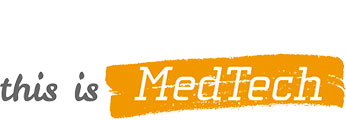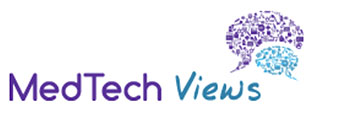Medical technologies have significantly improved cancer survival rates over the past 50 years, by preventing, diagnosing, and treating the disease at every stage. With the EU’s renewed focus on holistic cancer prevention, diagnosis, and care, understanding the value of medical technologies for patients, professionals, and healthcare systems is vital.
Medical technologies play an essential role throughout the whole cancer continuum: they help prevent and detect cancer at early stages, treat patients and prevent treatment complications, as well as improve the quality of life of cancer patients and survivors.
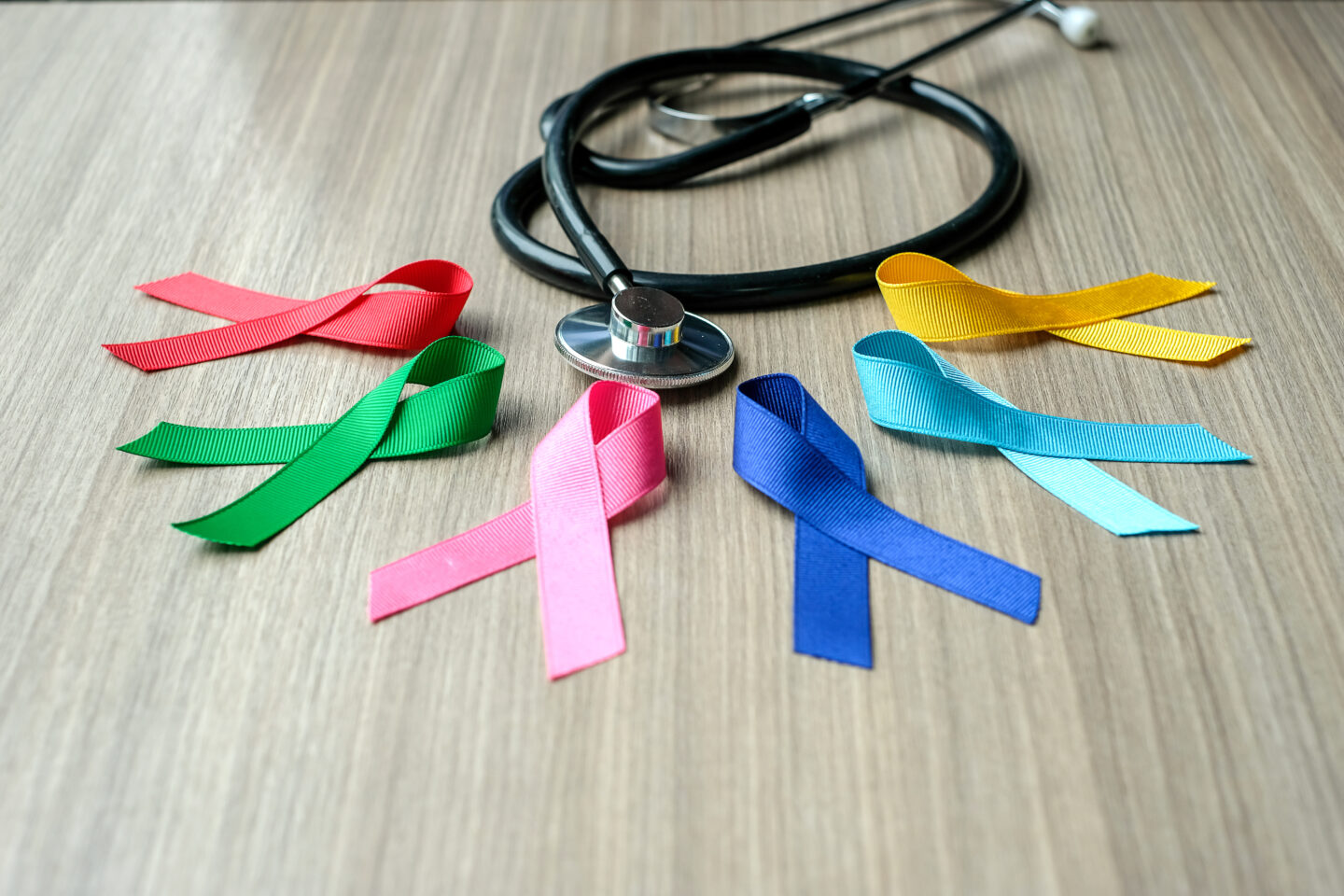
Medical technologies in cancer
Medical technologies play an essential role throughout the whole cancer continuum: they help prevent and detect cancer at early stages, treat patients and prevent treatment complications, as well as improve the quality of life of cancer patients and survivors.
There are three main categories of medical technologies: medical devices, in vitro diagnostics, and digital health:

Medical devices (MDs) are products, services or solutions that prevent, diagnose, monitor, treat and care for people – e.g., robotic surgery, cell therapy platforms, medical imaging equipment including CT scan, MRI, tomosynthesis and ultrasound, but also infection prevention devices to ensure patients safer care and post-surgery systems for better quality of life, including closed incision ciNPT, compression and securement.
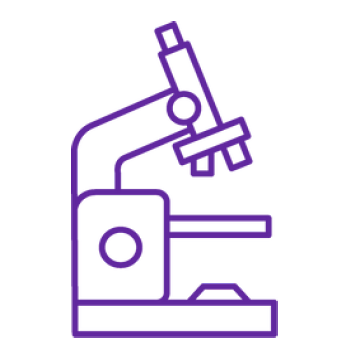
In vitro diagnostics (IVDs) are non-invasive tests used on biological samples (for example blood, urine or tissues) to provide information at different stages of the disease. For example, the likelihood of developing cancer at an early stage can be collected via, e.g., liquid biopsies, Multi-cancer early detection (MCED) tests, biomarker testing, personalised medicine, HPV mRNA and DNA tests.
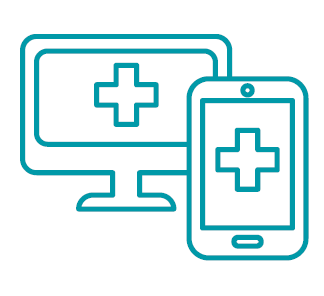
Digital health refers to tools and services that use information and communication technologies (ICTs) to improve prevention, diagnosis, treatment, monitoring and management of a person’s health and lifestyle, as well as healthcare and laboratory workflow efficiency – e.g., electronic medication management (EMM), clinical decision support tools, clinical algorithms, AI/ML applications, risk stratification scores, digital pathology and cytology and recovery monitoring.
The following are examples of new medical technology throughout the whole cancer continuum:

Prevention is better than cure. New medical technologies can transform cancer prevention strategies. Omics data analysis, including proteomic profile and genomic testing such as polygenic risk scores, have the potential to completely transform cancer prevention strategies as it enables the identification of population groups with the highest risk of developing certain diseases even before they show any symptoms.

The single most effective action on cancer is earlier screening: when detected early, cancer is easier to treat as it is typically localised. Conversely, if detected at a later stage, cancer may have spread, making it harder to treat and decreasing the chances of survival. For example, the five-year survival rate for early-stage breast cancer is close to 100%, while it drops to around 30% when it spreads at a later stage of the disease (1). Similarly, the five-year survival rate for early-stage colorectal cancer is over 90% but drops to 13% when cancers spread to distant parts of the body, such as the liver or lungs (2).
There are new medical technologies that support early diagnosis of cancer:
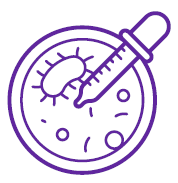
Liquid biopsy – Liquid biopsies detect in real-time circulating tumour cells, DNA or biomarkers in the blood to identify the best treatment for an individual patient. Performed with a simple blood draw, liquid biopsies complement tissue biopsies and can support beyond detection, including treatment selection, response monitoring, and studying resistance mechanisms.
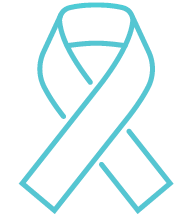
Cervical cancer – HPV mRNA and DNA tests: HPV mRNA and DNA tests are the method of choice for primary cervical screening, included in the new EU cancer screening recommendation. Able to detect abnormalities earlier than pap smear tests, these provide improved screening and early detection efficiency (3). New self-sampling tests allow increased adherence to screening programs by reducing costs to healthcare systems.
![]()
Prostate cancer – PSA, MRI and transperineal biopsy: Prostate-Specific Antigen (PSA) tests and magnetic resonance imaging (MRI) play a key role in the early diagnosis of prostate cancer. When a biopsy is recommended, transperineal biopsy reduces infectious complications in patients, improving patient safety.
![]() Colorectal Cancer – Up to 26% of adenomas are missed during colonoscopy (4). Increasing Adenoma Detection Rate by just 1% reduces the risk of interval carcinoma by 5% (5). Huge advances in imaging technologies, the use of Artificial Intelligence and assistive medical devices support improved diagnosis when used, giving the opportunity to diagnose patients earlier and earlier.
Colorectal Cancer – Up to 26% of adenomas are missed during colonoscopy (4). Increasing Adenoma Detection Rate by just 1% reduces the risk of interval carcinoma by 5% (5). Huge advances in imaging technologies, the use of Artificial Intelligence and assistive medical devices support improved diagnosis when used, giving the opportunity to diagnose patients earlier and earlier.
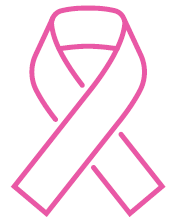 Breast cancer – precision diagnostics: Between 5-10% of women carry a gene that is associated with the growth of breast cancer and that can be identified with various imaging technologies, such as contrast-enhanced mammography or breast MRI, followed by confirmation via tissue biopsy. Another risk factor is high breast density, which can mask potential lesions. However, precision medicine allows the selection of the least invasive, least costly, but most effective treatment options for the individual patient. A recent technology (6), the Vacuum-Assisted Excision (VAE), allows the excision of breast lesions without the need for a surgical intervention.
Breast cancer – precision diagnostics: Between 5-10% of women carry a gene that is associated with the growth of breast cancer and that can be identified with various imaging technologies, such as contrast-enhanced mammography or breast MRI, followed by confirmation via tissue biopsy. Another risk factor is high breast density, which can mask potential lesions. However, precision medicine allows the selection of the least invasive, least costly, but most effective treatment options for the individual patient. A recent technology (6), the Vacuum-Assisted Excision (VAE), allows the excision of breast lesions without the need for a surgical intervention.
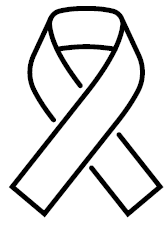 Lung cancer – low-dose CT scan: Approximately 50% of patients who receive surgical treatment are expected to have a recurrence within two years (7). Given this, patients should continue being monitored post-treatment. The low-dose CT scan is an X-ray technology able to capture significantly more detailed, 3-dimensional images that may reveal abnormalities in the lungs more accurately than traditional X-rays (8).
Lung cancer – low-dose CT scan: Approximately 50% of patients who receive surgical treatment are expected to have a recurrence within two years (7). Given this, patients should continue being monitored post-treatment. The low-dose CT scan is an X-ray technology able to capture significantly more detailed, 3-dimensional images that may reveal abnormalities in the lungs more accurately than traditional X-rays (8).
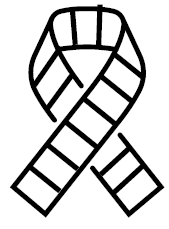 Rare cancer diagnosis: Thanks to next-generation genome sequencing (NGS), many rare cancer patients can now escape the “diagnosis odyssey” and get a reliable, quick diagnosis for their disease thanks to the power of genomic analysis.
Rare cancer diagnosis: Thanks to next-generation genome sequencing (NGS), many rare cancer patients can now escape the “diagnosis odyssey” and get a reliable, quick diagnosis for their disease thanks to the power of genomic analysis.

- Radiation therapy and infusions can avoid or limit patient surgery during treatment, while robot-assisted surgeries (9) have gradually evolved due to advancements in both hardware and software – this medical technology provides healthcare professionals more control, precision and flexibility during surgeries. As a result, robotic surgery excels at minimally invasive procedures, leading to fewer complications, less pain and faster recovery for patients when surgery is required (10).
- Companion diagnostic IVD tests inform new treatment options eg immunoncology & immunotherapy.
- Infection prevention devices, such as catheters (11), securement systems and antimicrobial dressings help ensure patients receive a safer standard of care.
- Closed incision Negative Pressure Therapy (ciNPT) (11) and Compression Systems, are post-surgery systems that provide patients with a better quality of life (QoL)

Health data infrastructures and sharing policies across the EU remain inadequate to implement population-scale genomic risk assessments. The quality of digital and real-world data (RWD) is increasing and offering valuable insights. Digital and interoperable systems are necessary to capture RWD, including e-prescription, e-preparation and e-administration of medication.

For patients
- Better care: Cancer patients have high hospitalisation rates due to the complexity of their diseases and treatments. They are particularly vulnerable due to their immunocompromised state and high-risk treatments, which can lead to healthcare-associated infections and sepsis. However, med tech can help prevent complications, enabling treatments to be delivered as planned without any issues.
- Higher survival rates: Early detection is critical for higher survival rates. For example, the five-year survival rate for early-stage breast cancer is close to 100%, while it drops to around 30% when it spreads at a later stage of the disease (12). Similarly, the five-year survival rate for early-stage colorectal cancer is over 90% but drops to 13% when cancer spreads to distant parts of the body, such as the liver or lungs.
- Patient safety: It is completely omitted from Europe’s Beating Cancer Plan text – a particularly relevant aspect in oncology due to the combination of high-risk patients (cancer patients are frequently immunocompromised and at risk of a wide range of healthcare-associated infections and sepsis) and high-risk treatments (high toxicity, low therapeutic indices, and intravenous administration). Medical devices and digitalisation (medication traceability systems) minimise adverse events for cancer patients in healthcare settings, like medication errors and infections.
For healthcare systems
Better care: medical technology improves workflow and reduces overall costs by streamlining tasks for healthcare providers. It can also shorten surgery duration and prevent human errors. Medication traceability eliminates manual drug prescription and documentation of preparation and administration. This improves patient planning and coordination in ambulatory care or one-day hospitals that administer medication to cancer patients.
Healthcare professionals who have been responsible for an adverse event for patients, such as medication error, have been shown to suffer significant emotional burden, with many ceasing professional activity for an average of 1-3 months (13).
Efficient and precise genomic diagnostics allow physicians to timely and accurately evaluate a patient’s tumour and make the right decision at the right time for the right patient. These also reduce costs for healthcare systems by avoiding unnecessary follow-ups.
In summary, cancer treatment and care is complex and require excellence and innovation not just in pharmaceutical products but also medical technologies spanning the whole cancer care continuum. In fact, the success of pharmaceutical treatments and patient safety are highly dependent on medical technologies. Given this, medical technologies should be prioritised on the EU agenda.
Barriers to adoption of medical technologies in cancer

The undeniable advancements in cancer treatment and diagnosis rely on the consistent and iterative innovation of medical technologies. However, the availability and accessibility of medical technologies in cancer care have not been prioritised enough. The lack of awareness of the true value and role of medical technology in cancer is a hurdle that undermines the extent to which medical technologies are supporting patients, healthcare professionals, and healthcare systems.
Despite cancer being in the spotlight of the EU policy landscape with Europe’s Beating Cancer Plan, there is little mention of medical technologies in it or in standards of cancer management in national cancer centres.
This significant gap in awareness is mainly due to the lack of:
- Diagnostic and treatment guidelines on the benefits of medical technology by scientific organisations.
- HCP and patient awareness of available solutions that could help provide better outcomes.
- Regulators’ lack of awareness and resistance to flexible evidence-gathering methodologies (real-world data) causes delays in the adoption of medical technologies that are already available in other regions in the world. Innovative medical technologies require implementation in lab and clinical settings to collect clinical data for cost-effectiveness evaluation, but this is only permitted after developers provide sufficient evidence and gain approval in Member States, creating a paradox.
- Healthcare professionals are not always trained and equipped with the knowledge of how to manage medical technologies, leading to a lack of awareness of the latest, most efficient and best-suited options for each patient.
- Health data infrastructures and sharing policies across the EU remain inadequate to implement population-scale genomic risk assessments. The quality of digital and real-world data (RWD) is increasing and offering valuable insights (15). Digital and interoperable systems are necessary to capture RWD, including e-prescription, e-preparation and e-administration of medication. Together, these can help provide a clear picture of the true value of medical technologies in cancer.

There is significant unequal access across the EU to medical technologies and diagnostics,especially between regions in the same Member State and between cities vs. rural areas. The medical technology industry in Europe often finds a gap or delay between scientificevidence and the approval of medical technologies. For cancer patients, it is extremelyfrustrating to wait for the approval of the best solutions for their disease, especially if theapprovals have been granted in other countries based on scientific evidence, but notaccessible in Europe yet.

Funding constraints and lack of funding programmes to support innovation and access to medical technologies in low- and middle-income countries exacerbate regional inequalities across the EU and within Member States.
Where funding support exists for medical technologies, it is significantly lower than funding support for the pharmaceutical sector. This is a missed opportunity which hinders the potential of what med tech can achieve.
Efforts exist across Europe and the world to appropriately evaluate existing med tech in oncology, applying a holistic approach to cancer care. We welcome disinvestment which leads to the implementation of new, more efficient and effective medical technologies.

Patients who live in high-income countries in Europe and with close access to digitalised hospitals have fewer chances of facing treatment errors. Moreover, regions that are closer to comprehensive cancer centres have access to more medical technology options.
For example, there is a significant degree of regional variation in diagnostic laboratory coverage of oncology biomarker testing, with some countries lacking sufficient laboratory infrastructure or established referral pathways to support equal access for all patients. Southern European countries, such as Spain and Italy, display regional variations in access to Next Generation Sequencing – a rapid and highly sensitive method to sequence large amounts of DNA at once – due to a combination of limited infrastructure and variable public funding by region (15).
HPV self-sampling can reach women who are not screened in the context of consultations with a health professional. Men who live closer to hospitals with transperineal prostate biopsy systems have a lower risk of suffering infections. Member States that have implemented national cancer information systems, such as Ireland, have access to better data, better treatments, and higher patient safety (16).

Europe´s Beating Cancer Plan includes significant funding from the EU4Health programme on cancer, including the European Cancer Information System, the European Cancer Imaging Initiative, the HPV vaccination campaign and the Comprehensive Cancer Centres Network. Still, even when appropriately resourced, introducing innovative medical technologies remains complex because the evaluation of single medical technologies remains isolated from the overall cancer care continuum they support.

There is a tendency to decide the adoption of innovative medical and digital technologies in cancer, based on price and not based on value. Without proper reimbursement, hospitals will choose to go for the lowest financial cost of medical technologies, even if it means that from a patient care perspective or an efficiency perspective, it is not the most ideal option. Because of this, the lack of a fit-for-purpose reimbursement scheme is a barrier towards the right uptake of med tech and undermines the visibility of the entire contribution of med tech in the oncology space.
Innovative medical technologies are generally more expensive than the existing ones but add value to the health systems by providing better patient outcomes and cost reductions in the long term. In order to maximise the value of medical technologies, value-based procurement for cancer disease areas should be implemented in all EU healthcare systems. Value-based pricing and procurement is a concept that drives an understanding that med tech is more than just its costs. It focuses on how a product or solution can best deliver desired outcomes, reduce the total cost of care, and provide long-term benefits to all the stakeholders in the healthcare ecosystem, rather than focusing exclusively on the initial cost of the specific medical technology.
As it stands, no reimbursement for integrated care makes it more challenging to place innovative, patient-centric solutions on the market, as well as to optimise the workflow of healthcare professionals and staff. Even in the most developed Member States, reimbursement for medical technologies is still decentralised. Looking at the continuum of care, reimbursement systems often don’t function alone in an efficient way, thus becoming a barrier to change itself.
Access delays and gaps
The lack of value-based and timely reimbursement and reimbursement for integrated care blocks the integration of innovative, patient-centric solutions in Member States and regions. Difficulty to recognise and value innovation has been a main obstacle closely linked to the fragmentation of reimbursement.
The example of breast cancer tomosynthesis well illustrates both the misconception about the value of medical technology and the difficulty to recognise innovation in the sector. Indeed, whereas tomosynthesis is more efficient than 2D mammography, it has taken more than ten years for the technology to be recognised in the EU cancer guidelines.
In many EU countries, health technology assessments (HTA) that take high costs and years of execution are required but reimbursement is not guaranteed, even if HTA results are satisfactory.
HTA methods were originally designed to assess and appraise medical technologies and medicines through randomised controlled trials (RCTs) to demonstrate comparative clinical and economic value.
However, medical technologies often have unique features and interactions the traditional RCTs before clinical implementation may not capture, hindering the robustness of evidence available at the time of HTA appraisal.
Real World Data (RWD) has strong potential to complement evidence gaps and address uncertainties in the assessment of medical technologies. However, national HTAs still show reluctance to adopt methods incorporating RWD.
Policy recommendations
The speed of change of the evolution of medical technologies is being hampered by resistance to change in EU policy and healthcare systems – as it stands, the regulatory system in Europe cannot keep pace with innovation in medical technology, with cancer patients being the most impacted. MedTech Europe urges all stakeholders to work together in tackling the real gap in access for cancer patients in Europe. Our aim is aligned with Europe’s Beating Cancer Plan (17) and with several national cancer plans (18), where there is already a commitment to address access inequalities.
Here are some of our proposed recommendations:
- Foster awareness and prioritisation of medical technology in cancer plans or policies
- Recognise the value of medical technology across the cancer care continuum in EU andMember State cancer plans and policies
- Seek the adoption of guidelines for medical technologies and devices in cancer centres, such as guidelines to prevent Surgical Site infections (SSIs) and Blood Stream Infections(BSIs)
- Increase training opportunities in the management of medical technologies by healthcare professionals
- Ensure equal access to medical technologies for all
- Implement population-based screening programmes in all Member States
- Incorporate medical technologies in the EU cancer centres’ certification/accreditation programmes
- Deploy EU4Health funding for EU-wide cancer screening and surgeries prioritising low-and middle-income countries
- Boost EU investments in innovation on prevention, building on existing initiatives such as the EHDS, 1+ Million Genome Initiative and Genome of Europe
- Adopt efficient reimbursement systems, funding programmes and value-based procurement for medical technologies in cancer
- The use of RWD should be recognised as a source of information for clinical evidence that can address gaps and uncertainties in regulatory decision-making
- Establish value-based procurement for medical technologies in cancer in all member states
- Improve reimbursement pathways for medical devices in cancer treatment so that reimbursement and clinical test availability go hand in hand and are not time-shifted
- Establish EU-wide guidelines to better inform national decisions on reimbursement of medical technologies to safeguard predictability and consistency in the decision-making process of Member States
- EU to allocate significant funding from EU4Health or new funding programmes to medical technology implementation in cancer in Member States
- Issue medical technology-specific calls in the coming Horizon work programmes, to boost R&D on promising medical technologies in cancer
Resources
- Source: American Cancer Society: Survival Rates for Breast Cancer (March 2023) – https://www.cancer.org/cancer/breast-cancer/understanding-a-breast-cancer-diagnosis/breast-cancer-survival-rates.html
- Source: American Cancer Society: Survival Rates for Colorectal Cancer (March 2023) – https://www.cancer.org/cancer/colon-rectal-cancer/detection-diagnosis-staging/survival-rates.html
- Source: National Library of Medicine: Cervical cancer: What are the benefits of HPV tests for cervical screening? (December 2017) https://www.ncbi.nlm.nih.gov/books/NBK475672/#:~:text=Many%20abnormal%20cells%20don’t,and%20never%20developed%20into%20cancer
- Source: Zhao, S., Wang, S., et al. 2019. Magnitude, Risk Factors, and Factors Associated With Adenoma Miss Rate of Tandem Colonoscopy: A Systematic Review and Meta-analysis. Gastroenterology 2019;156:1661–1674
- Source: Corley, D.A., Jensen, C.D., Marks, A.R., Zhao, W.K., Lee, J.K., Doubeni, C.A., Zauber, A.G., de Boer, J., Fireman, B.H., Schottinger, J.E. and Quinn, V.P., 2014. New england journal of medicine, 370(14), pp.1298-1306
- Source: Rakha EA, Pinder SE, Bartlett JM, Ibrahim M, Starczynski J, et al.: UK recommendations for HER2 assessment in breast cancer: an update (December 2022) – https://jcp.bmj.com/content/early/2022/12/22/jcp-2022-208632
- Source: BAP: Lung cancer follow-up and surveillance: the role of primary care (October 2021) – https://bpac.org.nz/2021/lung-cancer-surveillance.aspx
- Source: BICRAD: Lung Cancer Screening: What is a Low dose CT Scan? (July 2020) – https://www.bicrad.com/blog/ldct-101-how-low-dose-ct-scans-for-lung-cancer-screenings-work
- Source: National Cancer Institute: Radiation Therapy to Treat Cancer (January 2019) – https://www.cancer.gov/aboutcancer/treatment/types/radiationtherapy#:~:text=Radiation%20therapy%20(also%20called%20radiotherapy,your%20teeth%20or%20broken%20bones
- Source: Association for Advancing Automation: Robotic Surgery: The Next Decade of Innovation (April 2022) https://www.automate.org/editorials/robotic-surgery-the-next-decade-of-innovation#:~:text=New%20surgical%20robots%20incorporate%20miniature,surgeon%20view%20hidden%20surgery%20locations
- Source: L.M. Biehl et al. (October 2016): A randomized trial on chlorhexidine dressings for the prevention of catheter-related bloodstream infections in neutropenicpatients – https://www.annalsofoncology.org/article/S0923-7534(19)35905-8/fulltext
- Source: American Cancer Society: Survival Rates for Breast Cancer (March 2023) – https://www.cancer.org/cancer/breast-cancer/understanding-a-breast-cancer-diagnosis/breast-cancer-survival-rates.html
- Source: EHMA: Digital Medication Management in Healthcare Settings: An opportunity for the European Union – https://ehma.org/app/uploads/2022/11/Medication-mgmt-WP-2-1-1-compresso.pdf
- Source: McKinsey: Real-world data quality: What are the opportunities and challenges? (January 2023) – https://www.mckinsey.com/industries/life-sciences/our-insights/real-world-data-quality-what-are-the-opportunities-and-challenges
- Source: International Quality Network for Pathology (IQN Path), the European Cancer Patient Coalition (ECPC) and the European Federation of PharmaceuticalIndustries and Associations (EFPIA): Unlocking the potential of precision medicine in Europe (February 2021) – https://www.efpia.eu/media/589727/unlocking-the-potential-of-precision-medicine-in-europe.pdf
- Source: National Cancer Control Programme: FAQs – National Cancer Information System – https://www.hse.ie/eng/services/list/5/cancer/profinfo/medonc/projects/frequently%20asked%20questions%20-%20ncis.html
- Source: “Whole-of-government approach that focuses on the patient and maximises the potential of new technologies and insights” (Europe’s Beating Cancer Plan)
- Source:
- The National Cancer Control Programme of the Czech Republic 2005 – http://www.epaac.eu/from_heidi_wiki/Czech_Republic_National_Cancer_Control_Programme_English.jpeg
- Finnish National Cancer Plan http://www.epaac.eu/from_heidi_wiki/Finland_Summary_of_NCP_English.pdf
- Belgium National Cancer Plan 2008-2010 – http://www.epaac.eu/from_heidi_wiki/Belgium_National_Cancer_Plan_2008-2010_English.pdf
- Latvia Oncologic Diseases Control Programme 2009-2015 – http://www.epaac.eu/from_heidi_wiki/Latvia_Oncologic_Diseases_Control_Programme_2009-2015_Summary_English.pdf
Read our blogs
Transforming prostate cancer treatment
Posted on 26.05.2025
Beating cervical cancer with the support of medtech
Posted on 21.05.2025
The #PowerOfMedTech for the Movember movement
Posted on 15.11.2024
Related content
Posted on 28.09.2023
Living through thyroid cancer
Posted on 28.09.2023

